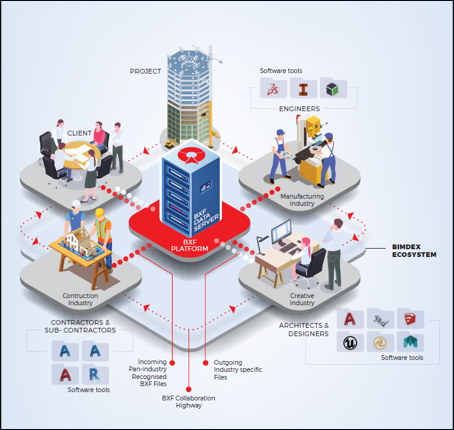
Digital Transformation for Enterprises
Digital transformation is a way for the design, manufacturing, and AEC companies to offer significantly greater value to their customers, employees, and stakeholders by breaking down silos between departments and helping entire organizations work smarter together. It is about using a connected data platform to make better-informed decisions, drive more innovation, increase productivity, and create new business opportunities. As the Architecture, Engineering and Construction (AEC) & advanced Manufacturing world pursues digital transformation, a growing Computer Assisted Drawing (CAD), Building Information Modelling (BIM), Generative Design software ecosystem presents both challenges and opportunities. The increasing flow of digital data to connect tools, people, and processes through all phases of design. Nevertheless, with booming engineering demand research suggests inadequate software interoperability can impede project success and become a source of frustration for project teams and a real risk for production. Ensuring the availability, access and interoperability of project data, no matter the source, is crucial to reaping the full rewards of digital transformation.
Getting Started with Digital Transformation through BIMDEX Ecosystem
Convergence of Design & Data
Connected Data & Collaboration
Lifecycle Digitalization & Automation

Lifecycle Digitalization & Automation
There are several elements of digital transformation that need to be considered. Key is lifecycle digitalization, which requires digitization. First a company must put appropriate assets into a unified format. This enables the company to better manage, use, and re-use those assets, and create more efficient processes that can be automated by digitalization. Once the assets are in a standard format, a company must create transparent, seamless information flows across the lifecycle and value network—creating a digital thread of connected information and processes.
- Generative Design
- Digital Twin
- AR/VR/MR/XR

INCREASE COLLABORATION
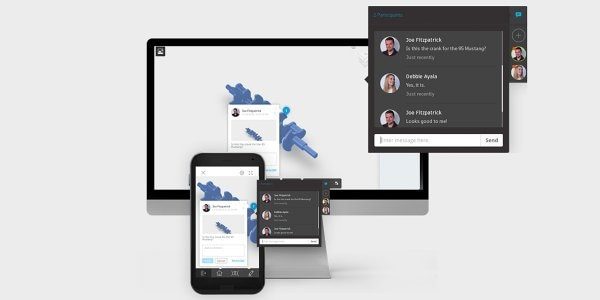
COLLABORATE FROM A SINGLE SOURCE OF DATA

UNIFIED PLATFORM
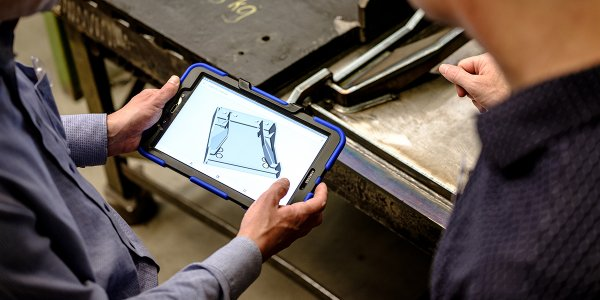
STREAMLINE MULTIPLE PROCESSES
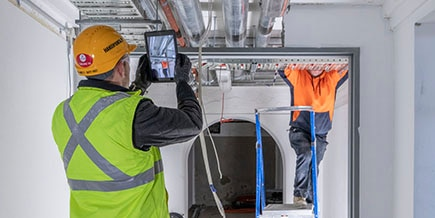
ENHANCE PRODUCTIVITY & LOWER COSTS
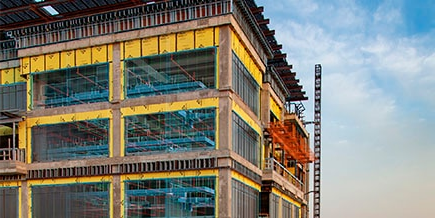
TRANSFORM BUILDING HANDOVER & MANUFACTURING PROCESSES

BIMDeX - Engineering Interoperability Ecosystem
More than ever, we need to work collaboratively across teams, tools, and industries to tackle the challenges of our present and future. With the increasing use of multiple projects-specific design and BIM tools, the need to exchange data between them has become inevitable within the AEC and Manufacturing industries. BIMDeX has been a pioneer in revolutionizing the data Interoperability between various such tools using our home bred BXF file format. Therefore, BIMDeX is committed to an interoperable software ecosystem defined by seamless data exchange between various tools such as SolidWorks, Creo, Inventor, Revit, SketchUp, Rhino, AutoCAD, AutoCAD Plant 3D, AutoCAD MEP and AutoCAD Civil 3D. BIMDeX provides and maintains an ecosystem of products to support better data exchange between designers, architects, engineers, contractors and all project stakeholders working in BIM.
BIMDeX enables universal interoperability across different Mechanical CAD and BIM applications and 3D ecosystem vendors. It provides efficient real-time data transfer and is based on the BXF file format. The BIMDeX Ecosystem is designed to act as a hub, enabling new capabilities to be exposed through its rich Data Repository, to be connected to other programs and applications.
BXF - Collaborate from a Single Source of Data
As part of our long-standing commitment to cross-platform interoperability, we continue to ensure that our portfolio of products meets the rigorous requirements of design community across all the industries. This cross-platform data exchange is achieved through the proprietary technology that is BXF which is effectively a data repository of all the information, geometry and metadata collected from the various design and BIM tools. Real interoperability depends on the adoption and use of common data standards.

Better digital workflows improve industry collaboration, and adopters of the BXF technology do realize the benefits of digital transformation. We work with industry experts to improve the BXF functionality, leveraging their expertise and know-how to work collaboratively across vendors and practitioners towards the goal of a more open and digitally enabled ecosystem. Created around the BXF file format, BIMDeX transfers all the data between applications allowing for real-time interactions, for improved efficiency in collaboration and live sync between applications. The BXF platform is built on modularity and performance in mind. Create extensions or build complete applications using the BXF SDK Kit. As a result of its power and versatility, it is being widely adopted, not only in the manufacturing community, but also in architecture, design, engineering, construction, and other disciplines..

Collaborate Across Industries and Engineering Platforms.
As the AEC industry becomes increasingly complex and data-driven, managing complexity through effective collaboration within project teams is key to streamlining design and delivery. Common data environments harness the full collaborative potential and productivity of AEC project teams from design to construction. A CDE ensures that project and design data are available, accessible and interchangeable to project stakeholders and contributors by unifying and standardizing the design and BIM processes within a framework of rules and best practices. BXF acts as a common database for all the project stakeholders as there is abundance of data stored within BXF that can be harnessed to run .
analytics, control, maintain and manage the design workflows and standards and integrate with other platforms for further processing. BIMDeX can now connect people, processes, and the entire design ecosystem more effectively—to design and make products/projects faster with lower costs and less waste.
Enterprise Connected Data Through Interoperability
Enterprise Interoperability is the ability of an enterprise - a company or other large organization—to functionally link activities, such as product design, supply chains, manufacturing, in an efficient and competitive way.
The BIMDEX Enterprise Interoperability Framework allows to:
- Capture and structure interoperability knowledge/solutions in the framework through a barrier-driven approach
- Provide support to enterprise interoperability engineers and industry end users to carry out their interoperability projects.

At its most fundamental level in the context of the digital ecosystem, interoperability is the ability to transfer and render useful data and other information across systems, applications, or components. And the development of the Internet of Things relies on interop. Large segments of the world are now interconnected as never before: people access knowledge remotely, collaborate more efficiently, and conduct every manner of business online. The most complex systems—government agencies, architecture and construction firms, manufacturing industries, transportation infrastructures, health care and energy systems—are linked by these new, invisible information channels, which are essential components of today’s global economy. An open interoperable infrastructure, fosters innovation, lowers barriers to entry, enhances user choice, increase flexibility and autonomy, provides easy and diverse access to the data, maintaining standards, improving effectiveness and efficiency.

Key Highlights:
- An Easy Interoperable Between Infrastructure, Mechanical and BIM Industries.
- Enhances User Choice in Clear Intuitive BIMDeX User Interface.
- Increase Flexibility and Autonomy in Proprietary Technology.
- Provides Easy and Diverse Access to The Data to Meet the Industry Standards.
- Improving Effectiveness and Efficiency
Convergence of Engineering Design & Data
Digital transformation begins with convergence, connecting your organization using data while bridging the gap to bring together different disciplines such as CAD, BIM and related Renderings, Animations from different teams in one product environment. Data is the key to connecting your entire AEC & manufacturing ecosystem to keep your business operational. Accessing data via the cloud has become a necessity for collaboration; it is a critical component that connects end to end, from initial concept to delivery to your clients.
Standardize Data Exchange Format
Centralize all design changes, comments and mark-ups made from various teams to easily see how your project is progressing.
Connect with Your Teams and Suppliers
Manage access and share files securely with internal and external stakeholders. View and review designs instantly.
Collaborate Without Limitation
Access design data with the project teams/stake holders from any CAD, BIM & Animation software’s
Data Storage
To gather all the data related to the supply chain and about the following parameters involved in manufacturing you need the storage and that is possible by deploying data analytics solutions.
Data Analysis
Pattern helps you to improve the process which leads to a greater impact on the production and the products. With the analysis tools, it helps us to become decisive by breaking down each process from supply chain to the final product.
Profiling
In general terms, you profile the things to give it a better shape. Well, Profiling is the tools which gives a better shape to your manufacturing segment by cumulating the information as much as
Data Cleansing
When the information is in sheer volume it is difficult to segregate the information from different sources. Well, Big data analytics can act as a savior for you. It enables cleansing of the information into unified data sets and makes it readable. Data analytics also helps to make the information standard which makes it feasible to read by the executives.
Data Mapping
It is the tool that helps you to compare the process with the ideal one. As during the manufacturing, there are always some potential problems that can enact disastrous effects for the company. Mapping enables to identify dependencies at the present and anticipate you with the future ones.
Data Visualization
To give a better understanding of what is happening you need the statistics and charts. Visualization tools transform the collected data into SQL databases and spreadsheets. Monitor your process: It is important to look over every single process from the supply chain and the process involved during the manufacturing as it gives you the insights to render the asset performance. As monitoring tools help us to know the deviation from the standard process


